In the fast-paced world of healthcare, effective communication is paramount. Patients, visitors, and healthcare professionals all rely on clear, concise information to navigate complex medical facilities safely and efficiently. One often overlooked but critical aspect of healthcare communication is medical signage. This comprehensive guide explores the vital role of medical signage in healthcare facilities and its impact on patient care, safety, and overall hospital operations.
Understanding the Purpose of Medical Signage
Medical signage encompasses a wide range of signs within healthcare facilities, including but not limited to:
- Wayfinding Signs: These guide patients and visitors to various departments, clinics, and facilities within the hospital. They play a crucial role in helping people navigate complex healthcare environments.
- Informational Signs: These provide essential information, such as visiting hours, hospital policies, and contact details. They keep patients and visitors informed.
- Regulatory Signs: These communicate rules, regulations, and safety measures, ensuring the safety and well-being of all individuals within the facility.
- Identification Signs: These include room numbers, department names, and other identifiers that help patients and staff locate specific areas easily.
The Impact of Effective Medical Signage
- Improved Patient Experience: Well-designed signage enhances the overall patient experience. Patients feel less anxious when they can easily find their way around the facility, leading to increased satisfaction.
- Efficient Workflow: Medical professionals benefit from efficient signage as it enables them to navigate the facility quickly. This efficiency can be a matter of life and death in emergencies.
- Reduced Stress and Confusion: In a healthcare setting, stress and confusion can be detrimental. Clear, concise signage reduces these feelings, helping patients and visitors feel more at ease.
- Compliance with Regulations: Medical signage ensures that a healthcare facility remains compliant with health and safety regulations, reducing the risk of legal issues.
Design Principles for Effective Medical Signage
To make the most of medical signage in healthcare facilities, consider the following design principles:
- Clarity: Signs should be easy to read and understand. Use simple language and clear fonts. Ensure proper contrast between text and background for visibility.
- Consistency: Maintain a consistent design throughout the facility. This helps users develop a mental map and navigate with confidence.
- Visibility: Consider the size, placement, and lighting of signage to ensure it is visible from a distance and in various lighting conditions.
- Accessibility: Ensure that signage is accessible to all, including individuals with disabilities. This involves using braille, tactile elements, and appropriate heights for different users.
- Use of Symbols: Utilize universally recognized symbols to convey information, as they can transcend language barriers.
- Regular Maintenance: Regularly inspect and update signage to ensure that it remains accurate and in good condition.
Emerging Trends in Medical Signage
The field of medical signage is evolving, driven by advancements in technology and a growing awareness of the importance of patient experience. Some emerging trends in medical signage include:
- Digital Signage: Interactive and digital signs can provide real-time information and dynamic wayfinding, making navigation even more accessible.
- Wayfinding Apps: Hospitals are increasingly offering mobile apps that provide turn-by-turn directions within the facility, enhancing the patient experience.
- Personalized Signage: Some facilities are exploring personalized signage solutions, allowing for a more patient-centric experience.


